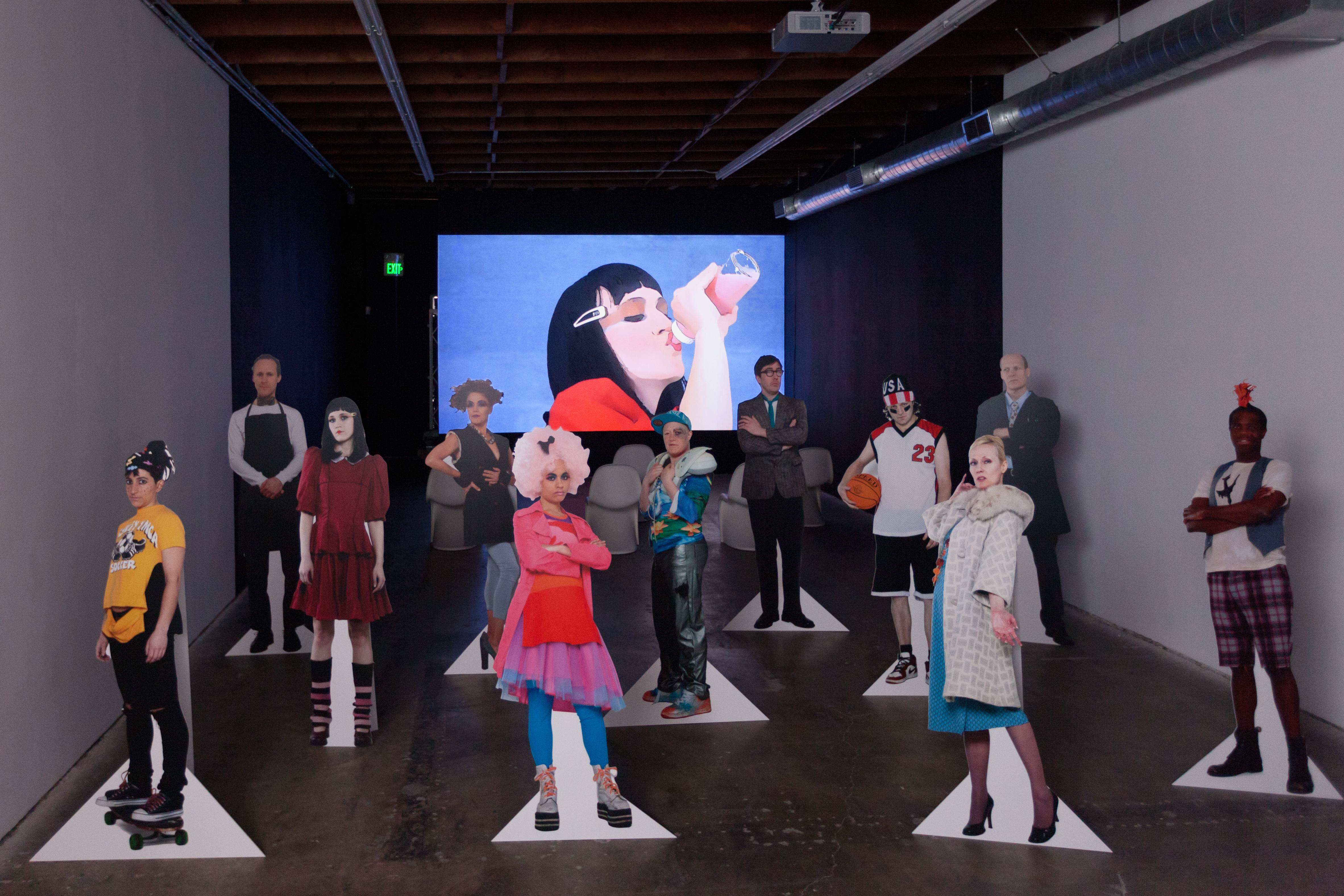
‘“These people don’t have friends, Angel. They have interests, and don’t you forget it,” Tanya tells her co-conspirator in the opening sequence of artist Laura Parnes’ new film County Down. Angel, the precocious rebel-genius played by Stephanie Vella, has just designed a pink hallucinogenic called Quix, packaged in baby bottles and distributed to other teens in their posh gated community. Her popularity has skyrocketed, especially since all the adults in the neighborhood seem to be going slowly mad and anxiety among teens is at a high point. “Right now, it’s in their interests to respect us,” Tanya adds.
‘County Down, feature-length and animated using rotoscoping, a technique that turns live action into cartoon, is very ’90s — it looks like a video game informed by rave culture, anime, McMansions and Clinton-era oblivion. Its protagonist, Angel, could be a composite of a slightly snazzed-up Daria from MTV and Christina Ricci’s Wendy from The Ice Storm — she’s different, dark, sassy, smart and maybe dangerous. She has heavy blue eye makeup and a vintage schoolgirl wardrobe, and she’s in over her head.
‘“It’s embarrassing how long I’ve been working on this,” says Brooklyn-based Parnes, who wrote the treatment in 2001, after Christine Vachon from Killer Films, who produced Todd Haynes’ Poison and more recently HBO’s Mildred Pierce, encouraged her to do so. That was just before the Sept. 11 terrorist attacks, and plans stagnated after patriotism surged and wars started. “It was not a good time,” Parnes says.
‘She turned her efforts toward video installations like The Only Ones Left, in which a mafia boss who looks like he works on Capitol Hill kills his own men and, at one point, says what George W. Bush said about not letting foreign aid influence tactics in Afghanistan: “At some point, we may be the only ones left. That’s OK with me. We are America.”
‘Parnes also made Blood and Guts in High School, an interpretation of Kathy Acker’s 1978 novel by the same name, in which a punk heroine endures sexual abuse by her cosmopolitan father, joins a New York gang, is nearly forced into prostitution, then dies of cancer. That film explored the desire to rebel, and how difficult it is to do so when you’re born into a permissive, sometimes nihilistic social enclave.
‘County Down deals with that same difficulty and features latchkey kids trying to live out “the traditional, romantic idea of the teenager” even though the adults around them have never stopped misbehaving. Parnes staged a reading of it in 2009, at the same time Blood and Guts was screening at Participant Inc. in New York. Her audience recognized the County Down milieu — the jocks, punks, smart alecks and tomboys — and laughed. “If they’re laughing, I have to make this,” Parnes thought.
‘She spent three years, from 2009 until now, casting familiar New York performance artists like Kate Valk of the Wooster Group and Jim Fletcher, filming whenever she could get everyone together and editing mostly on her own. But County Down’s long delay has probably been a good thing.
‘“It’s hard to make a piece about the time that you live in,” says Parnes. She tried it when she made No Is Yes in 1998, in which two girls kill and mutilate a counterculture rock star. People couldn’t zoom out enough to take in the film’s implications — that the ’90s mainstream had devoured the underground. But now, in 2012, it’s been 20 years since the Clinton campaign latched onto “It’s the economy, stupid” and pinned early-’90s recession on George H.W. Bush. It’s been 16 years since Alan Greenspan described the mid-’90s stock market bubble as “irrational exuberance” and Alanis Morissette defined irony as “life’s funny way of sneaking up on you…when you think everything’s gone wrong and everything blows up in your face.” All that feels like it’s of an era we’ve lived through and moved well past, which means Parnes’ film revisits a world far enough away that its ominousness is understandable.
‘“Destruction is the one principle in the world we can count on,” Angel says, two-thirds of the way through Parnes’ film. “That and Quix.” Parnes initially called the drug Triple X, but then xXx the movie came out. She tried calling it Tsunami instead, but then the devastating tsunami hit Japan. Quix had none of that baggage. “It’s like instant sweetness or something,” Angel gushes in County Down. “It sounds like immediate gratification,” says Parnes.
‘The film ends when most adults have died or lost their minds completely — one woman tries to devour her son’s leg — and even Angel’s friends have begun to crawl around delusionally, due to the dwindling supply of Quix. In the last scene, men in white jumpsuits and face masks lead Angel and Tanya from their gated enclave into the wider world. We hear Angel’s voice, coming at us from the future, nostalgic for her moment of disastrous, youthful free reign: “Everything’s different now and I know that’s a good thing, but sometimes I wish I could go back to that time, when I was really a part of something.”’ — Catherine Wagley, LA Weekly
___
Projections & Installations
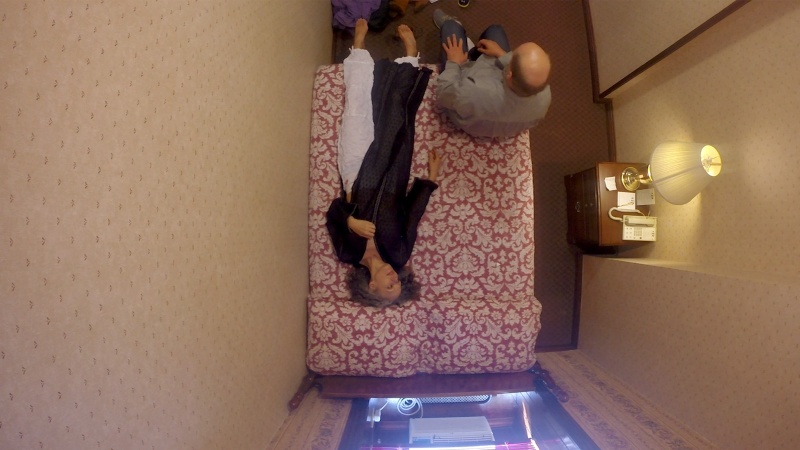
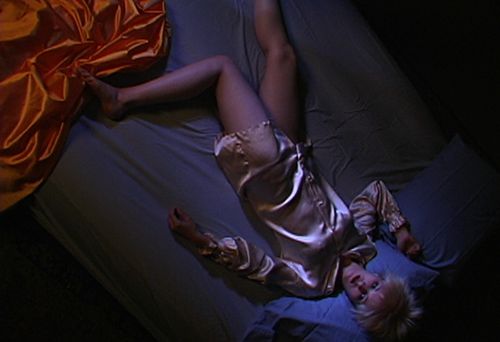
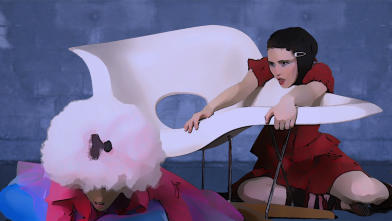

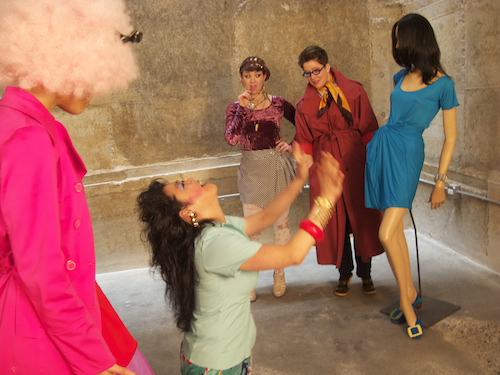
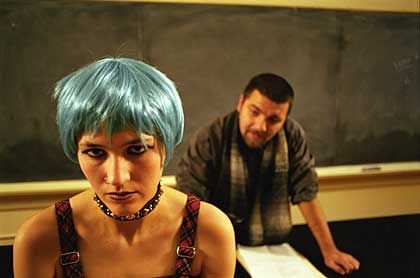
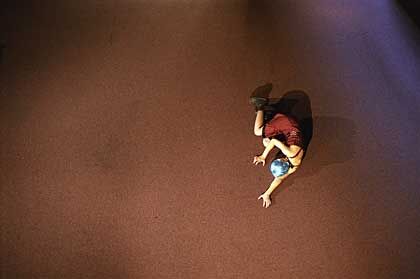

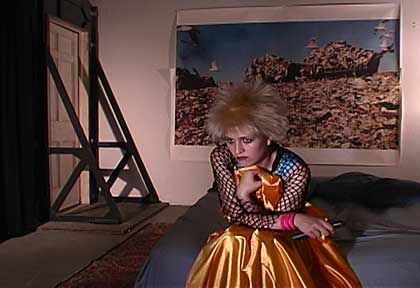
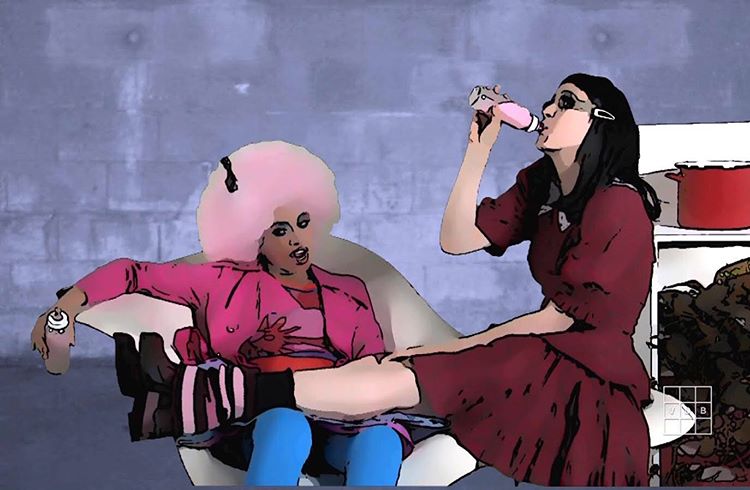
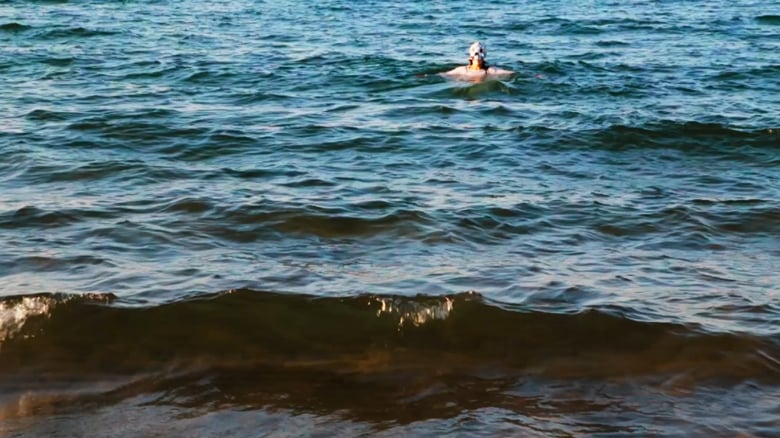
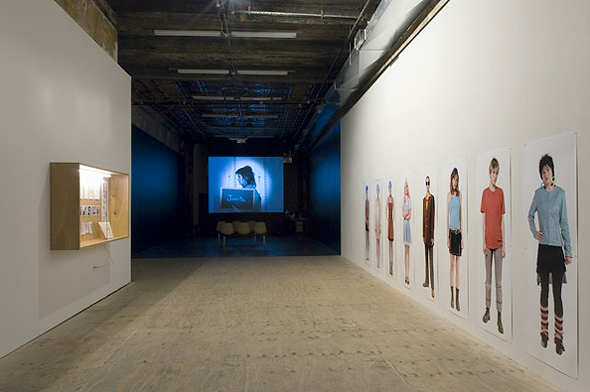
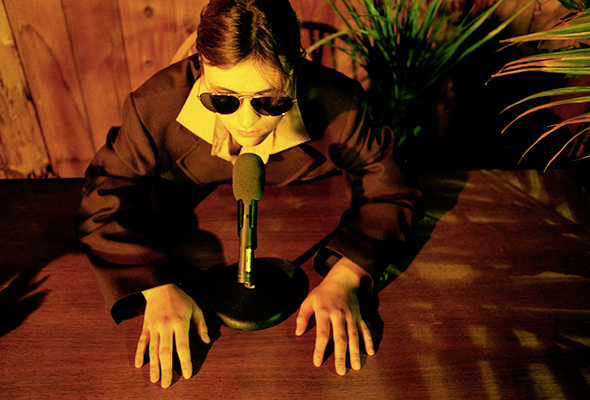
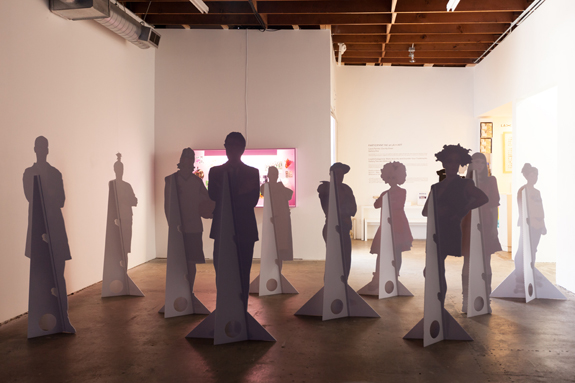
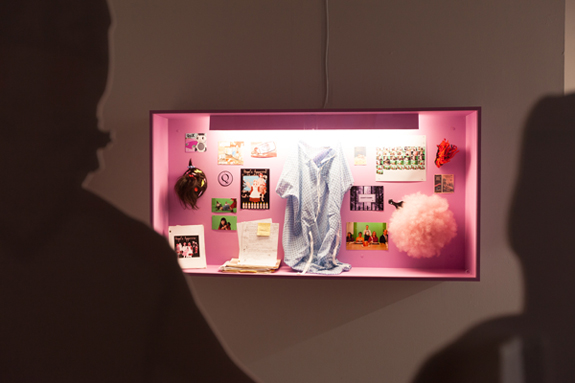
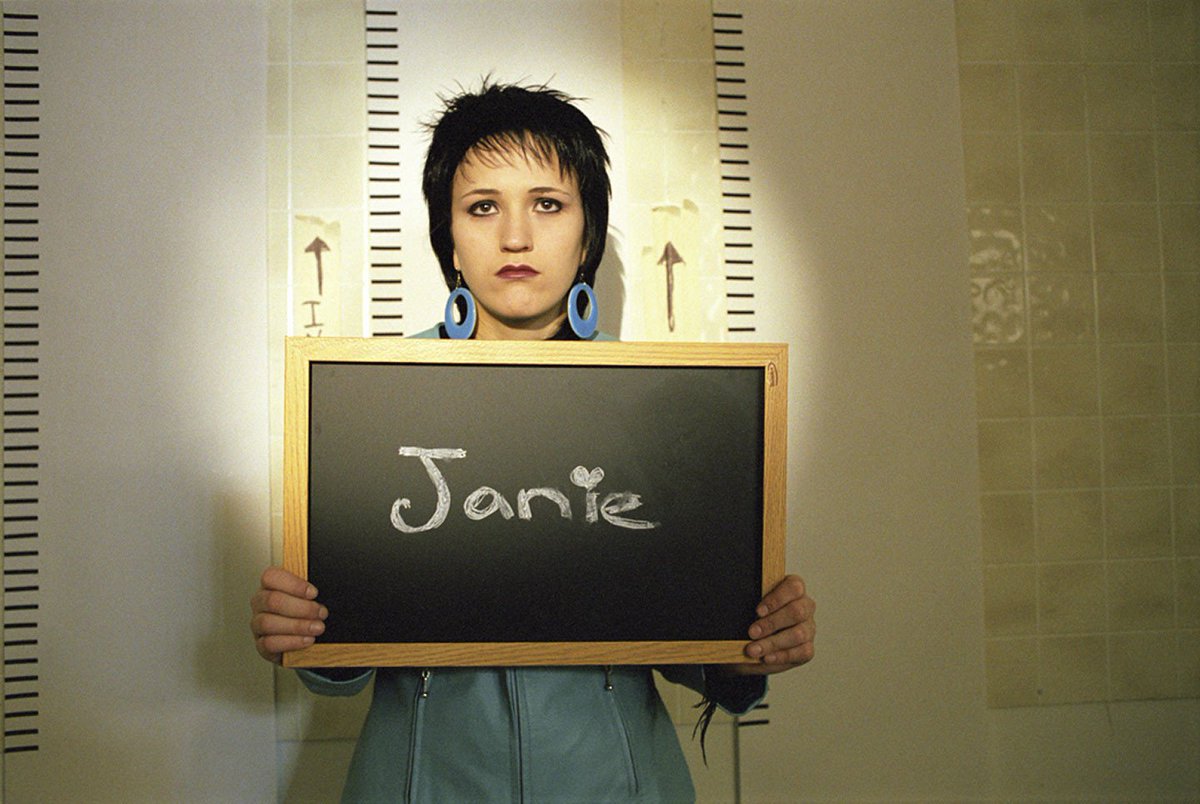

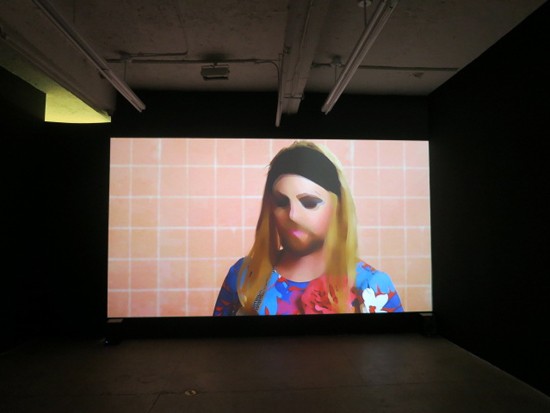

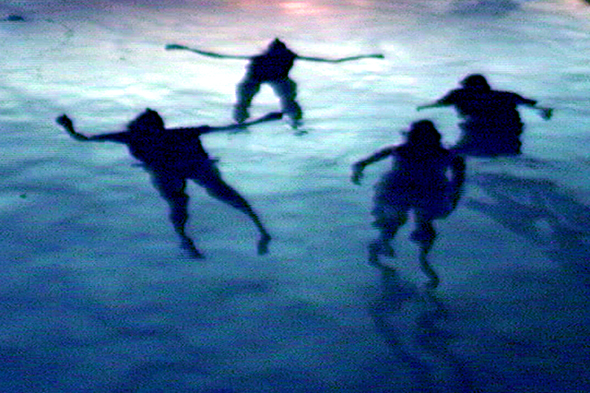
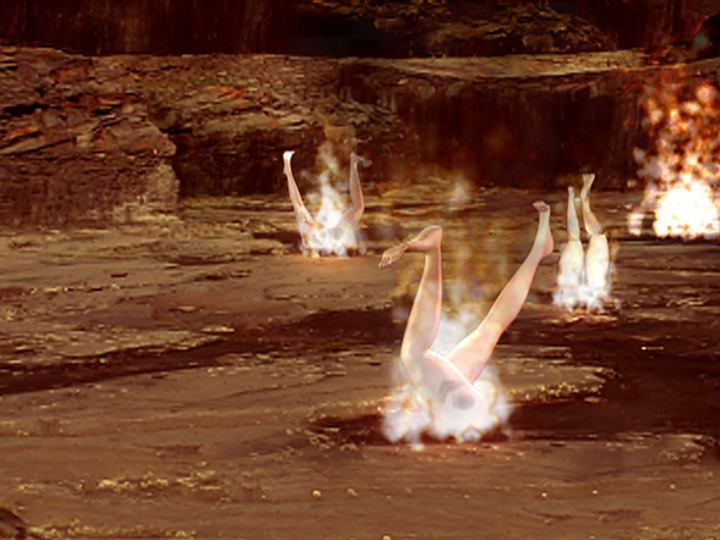
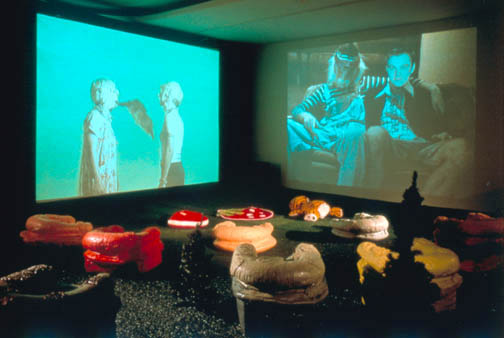
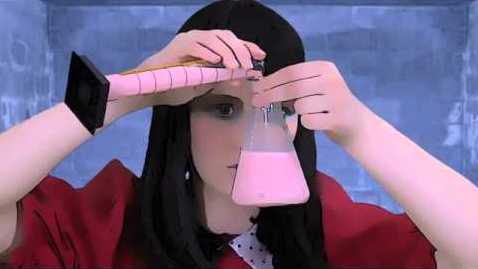
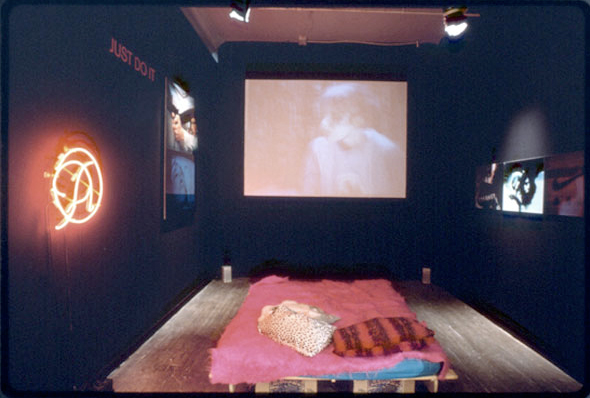
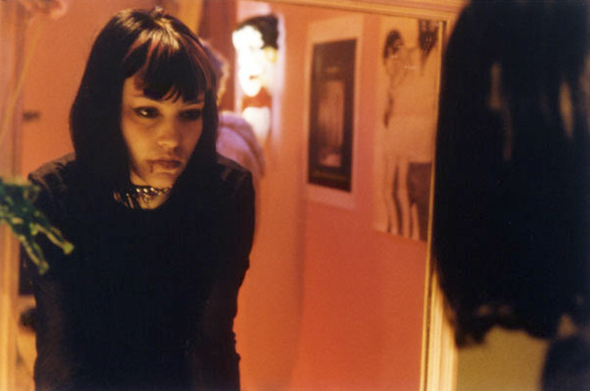
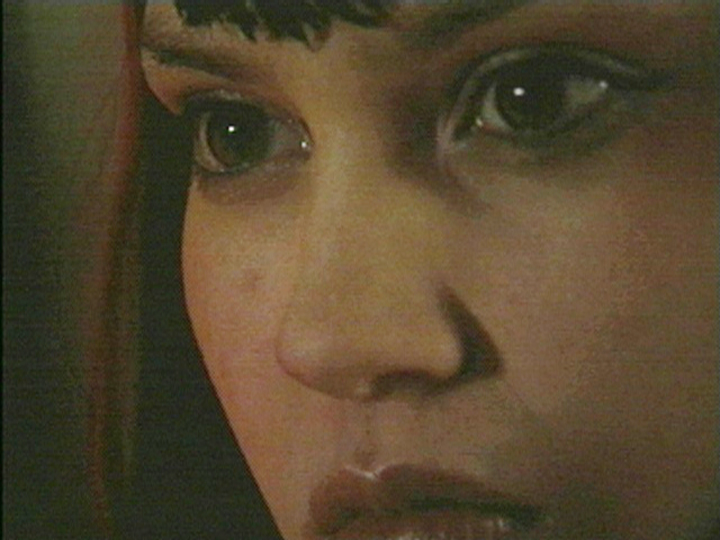
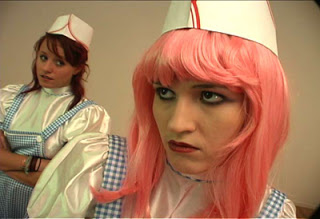
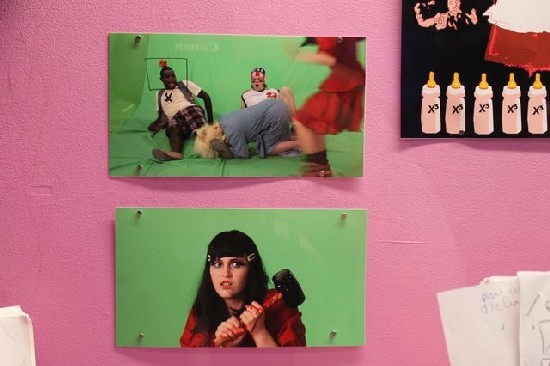
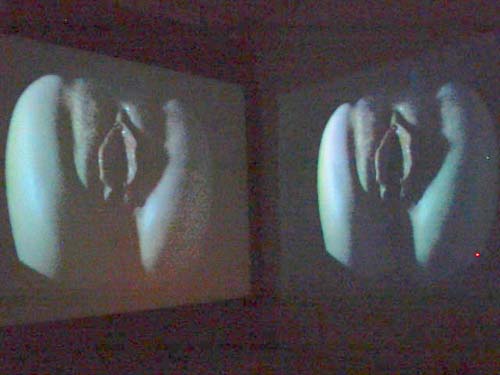
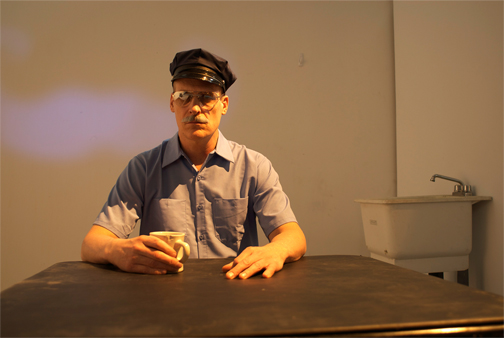
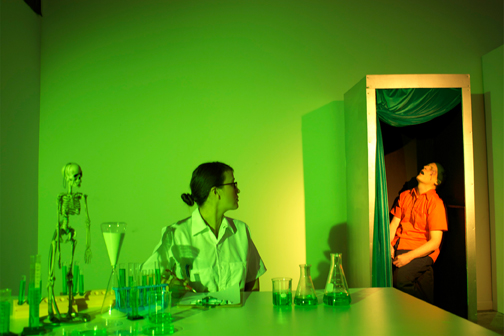
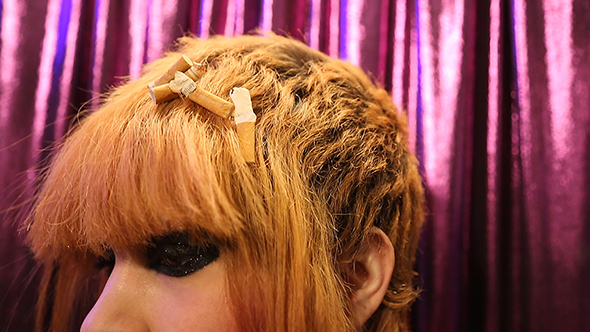
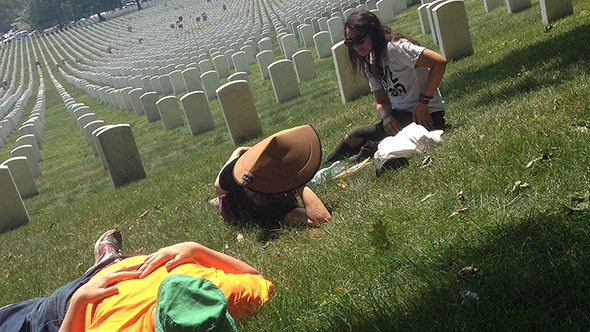
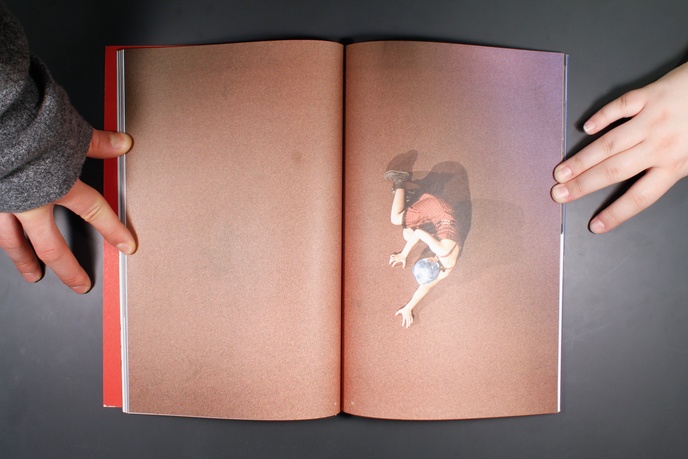
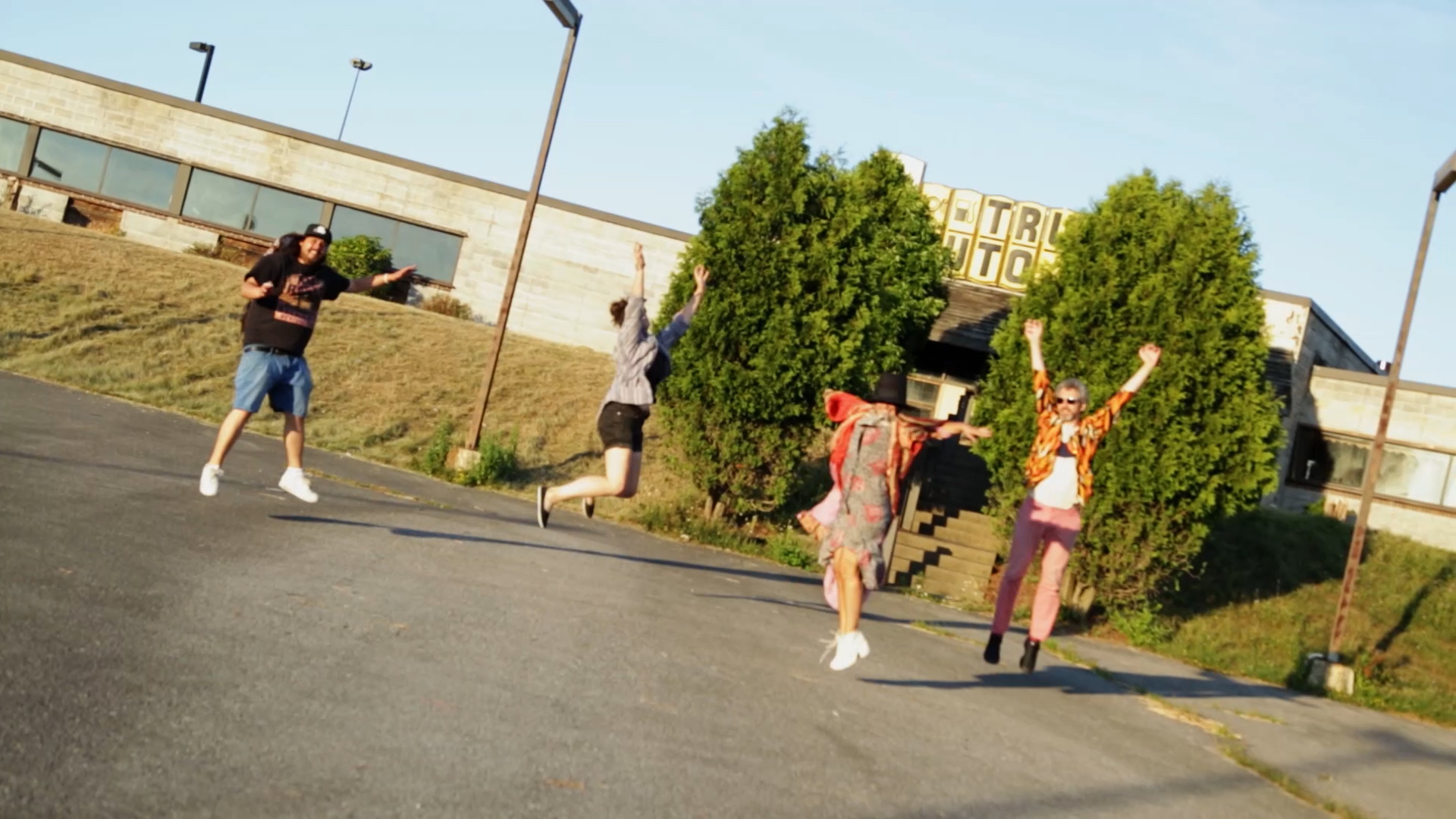
____
Further
Laura Parnes Site
Laura Parnes on improvisation and deep collaboration
Laura Parnes @ Twitter
Laura Parnes @ Instagram
David Velasco on Laura Parnes
Book: Blood and Guts in Hollywood: Two Screenplays by Laura Parnes
Sue De Beer and Laura Parnes
Laura Parnes @ Film-makers Coop
Exposing the Blood and Guts of Hollywood’s Teen Girl Fantasy
Book: Laura Parnes ‘Documentation of The St. Jude You Prick Chain Letter Series’
This New Music Doc Is like Spinal Tap By Way of the Enlightenment
Josefina Ayerza on Heidi 2
ARE YOU HIGH ON QUIX? IN LAURA PARNES’ FAKE GATED COMMUNITY, THIS DRUG IS ALL THE RAGE
Sardonic Tales: an Interview With Video Artist Laura Parnes
“Conjuring Julia Kristeva´s notion of the abject” Laura Parnes “creates a willful ambivalence in her work through terse, non-linear narratives”
Video Artist Laura Parnes on Her Fascination with Teenaged Rebellion
___
Extras
Lilliana Latorre ‘This Is Laura Parnes’
Laura Parnes Talk @ Creative Capital
Shopping in Tongues
____
Interview
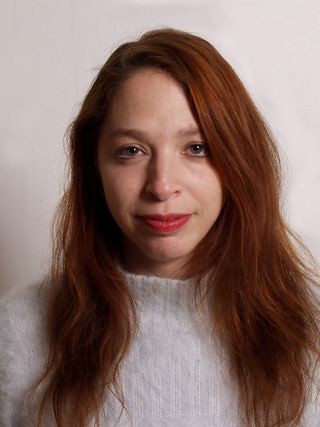
Jane Ursula Harris: The bad girl/teen rebel seems to be a leitmotif, one you simultaneously lampoon through caricature and herald by alluding to its potential. Why do you think this is?
Laura Parnes: I’m interested in the teenager as an outsider or a symbol of rebellion. There is the romantic vision of the teen peering in on a culture they haven’t really personally participated in. This holds potential for criticality but is often tempered by a desire to gain status, power, agency. In Catcher in the Rye, Holden Caulfield is horrified at the hypocrisy of the adult world. Fueled by the cultural ambivalence towards the adolescent female, my teen characters tend to see the absurdity of contemporary culture as a given. Often their access to power requires constant self-objectification and often the power they access is painfully predictable, even boring. What’s a girl to do but manufacture drugs or accidentally kill and mutilate your favorite rock star?
JH: Can you talk more about this idea of the “cultural ambivalence towards the adolescent girl” and what you think contributes to this?
LP: I guess I’m talking about our obsession with youth and beauty and our dismissal of young woman in regards to their intellect. And though they become symbols of desire, their pleasure is often of little interest. I’m also interested in the predictable nature of these power dynamics and the clichés and stereotypes that those in power often play out — like the self-involved, sadistic rock star, the lascivious, judgmental preacher or the condescending, perverse professor.
JH: You’ve mentioned the influence of Cronenberg’s early films, namely his use of architecture, on your work. I can see aspects of that brutalist aesthetic in your sets, and the way they impart a similarly generic sense of menace, and in your attraction to Kathy Acker’s novel, Blood and Guts in High School (1978), which you brilliantly adapt in your eponymous film of 2009. Like the authority figures, parents, institutions, etc. that function regularly as allegories of state control, there’s a feeling that the built environment is villainous too, somehow. Or implicated. How else do you see this operating in your work?
LP: Blood and Guts in High School was shot for the most part at Bennington College. The architecture is International style and is very 70’s and very New England. In many ways the buildings are stunning but the dirty carpets and stained drop-ceilings are indications of an institution in decline. The vast institutional spaces overwhelm the protagonists always asserting dominance over the students who use it. In County Down, the gated community is a perfect petri dish for Angel’s designer drug to go awry. The fake McMansion style exteriors and the cell-like architecture within mirror the characters that inhabit them. It’s the perfect setting for an epidemic of psychosis.
JH: Interestingly, Blood and Guts has none of the burlesque stream-of-consciousness of Acker’s writing, its pared down aesthetic and minimal dialogue more like an apocalyptic parable than pomo (postmodern) rant. Of course there’s a similar tone, a nihilistic sensibility, that gets evoked, but it still becomes its own work, independent of a viewer’s familiarity with Acker’s text (a good thing IMHO). How conscious were you in distinguishing your work from its precedent?
LP: I love Acker’s work and this book was seminal in the development of my own practice especially how she embraced defiance and her own rage combined with this explosion of intellectual bravado. With her popularity waning and a generational shift away from work expressing anger, I wanted to make a period piece about the current moment – life during the Bush administration. I used certain elements in the book as a starting point and then developed them as a series of allegorical vignettes.
JH: How do you see this generational difference playing out in Heidi II, another example of a work made “after” another (Mike Kelley and Paul McCarthy’s Heidi, 1992). And do you consider these works appropriation, critique, exegesis, or just a springboard for your own ideas?
LP: In all of my work that refers to a book, video or film the original texts function as a springboard. There is a book of scripts (published by that Participant Inc.) that include Hollywood Inferno and Blood and Guts in High School, which gives specific insight into how I adapted Acker’s book. In Hollywood Inferno it’s more just a reference to Dante’s inferno. It’s Dante as Sandy, an aspiring actress/model traveling to hell on a mall escalator with Virgil the sleazy screenwriter as a guide. Heidi 2 kind of functioned as a critique and homage. It uses humor and B-movie aesthetics to ask questions about gender and the narrative of art historical lineage. There’s a bloody puppet birth, bulimic contests, sexual play and technological degradation. It’s hilarious.
JH: It is. I particularly love the scene in Blood and Guts where Janie becomes Jim Jones — archival audio of the later merging with her image as she delivers his infamous speech to the compound. Its such a slapstick moment with perfect comedic timing. A lot of your humor oscillates between this laugh out loud kind of funny and the deadpan. How important is humor to your work, and how do you modulate its role in your work?
LP: I’m very invested in humor and I’m always ironically applying popular culture aesthetics to comment on a lot of other cultural issues. In Blood and Guts the comedic timing is slowed down to the point where one can barley recognize the joke. I’m interested in the tension of pulling a joke apart until it almost disintegrates. When Janie gets thrown in a prison cell and spouts a heartfelt speech about her rights, the policeman responds in a slow motion pivot like Christopher Walken and says “What are you? Some kind of hippy?” I like to play with the familiar and uncomfortable. In County Down, I try to take the teenager embarrassed to be seen shopping with her mother to a new level. Tanya gazes in horror as mom writhes on the ground speaking in tongues and groping a nearby mannequin. The teens cope with a psychotic culture by embracing superficiality to a degree that’s nihilistic. In this case, the teens watching the scene respond with a flippant insult about shoes: “P.S. Her shoes are from Target.”
JH: Yes, there’s a wonderfully creepy side to your humor that sometimes has genuinely disturbing undertones. I’m thinking especially of Heidi 2, which opens with the theme song for Rosemarie’s Baby, and ends with Heidi1 cramming a TV into Heidi 2’s gaping stomach (after the latter has aborted Peter’s baby). Its all too absurd to take seriously and yet there are moments of real unease. Many have interpreted the work solely in terms of the anxiety of influence (and you do call it the “unauthorized sequel”), suggesting Grandpa represented Kelley and McCarthy. Others have created a whole psychoanalytic exegesis about it. What were you and de Beer ultimately trying to say with this work?
LP: I can’t speak for Sue but I think all those responses are valid. Heidi 2 was fueled by a frustration that work by women tends to be seen in relation to gender whereas art by men is seen in a more universal light. I think this is a frustration that artists feel in relation to race as well. So, for me it’s a wickedly satirical piece but also a horror movie, and a sleazy one at that.
JH: Your ongoing series The Real Art World seems to express the same sort of parodic take, reflecting no doubt your experiences as an artist as well as a (former) director of Momenta Art. There’s so much that resonates for me having done many studio visits myself, though obviously the scenarios are more outlandish for hyperbolic effect. What motivated you to create this work, and what typically inspires a new episode?
LP: I teach and I used to curate and I’m an artist so I’ve experienced the studio visit from many sides and it’s kind of a comedic goldmine. For those who don’t know, before a work of art is chosen for exhibition, gallerists or curators visit the artist’s studio to meet the artist and see the work in person. Consequentially, the artist must convince the visitor of the value of their work. Like a confidence game or a first date, the power dynamics of the studio visit are wrought with miscommunication and ego clashes. One of my favorite interactions reflects art world characters who eagerly keep the bar low. A painter pulls out a canvas depicting Farah Faucet and says “In this one, really in all of them, there is this question of clichés and stereotypes. I want to make work that is truly cliché. I can’t stand work that critiques clichés. I would rather try to find a set of clichés that I can really believe in.” The gallerist responds, “That is sooo refreshing.”
___
Show
____________
No Is Yes (1998)
‘No Is Yes examines the inevitable co-option of counter culture through two teenage girls that accidentally kill and mutilate their favorite rockstar. It is inspired by MTV’ s habitual use of experimental film and video techniques to render elaborate ads for their specialized product – the pop-star. It is further inspired by fashion advertising which is styled after various artist’s work (ie. Nan Goldin, Larry Clark, etc…). Many of these artists used photography to document “counter-culture”, and/or to critique popular culture. This accentuates the irony, as these these stylized versions of their work re-enter the world in the form of advertisements. “An ‘art video’ that plays like a dark, over-medicated afterschool special, No Is Yes is one of the better examples of what video can do that I’ve seen lately.” — Chris Lee, Waterfront Week
Excerpt
_______________
w/ Sue de Beer Heidi 2 (2000)
‘Heidi 2, produced in collaboration with Sue de Beer, is a feminist revision of Mike Kelley and Paul McCarthy’s 1992 video, Heidi. This intentionally low-end production illustrates the way B-movie aesthetics can be employed ironically to comment on cultural depravity. This mother/daughter story reclaims patriarchal abjection through reinterpretation. The work is introduced through a disturbingly humorous birth scene. From there, the pair’s daily life gradually moves from bulimic contests and sexual play to technologized degradation. This relationship implodes in the final scene when the daughter, Heidi 2, surgically implants a TV set into her own abdomen with her mother’s help. The TV contains a live feed of herself. Aesthetically, the cold Cronenberg-esque silences distill the horror of transmitted self-objectification particular to the adolescent female. “Pulsing with the murky horror and red-light glow of cult films like Liquid Sky and Videodrome, Sue de Beer and Laura Parnes’s video Heidi 2 has been one of the most inspired works of art to arrive in New York this season.”‘ — Michael Cohen, Flash Art
Excerpt
_______________
Hollywood Inferno (2001 – 2003)
‘Formally structured and shot for double projection, the work invokes a voyeuristic point of view that propels the subplot of suburban surveillance. Deploying visual and verbal quotations, the disjointed world magnifies the effects of commercial over-saturation. Actual experience is suspect as fabrication. Virgil’s character is culled from the pages of Penthouse and Artforum. As he leads her through this defamiliarized territory populated by demonic Furbies, Columbine models, and fire-breathing teenagers, she becomes increasingly seduced by the pleasure of spectatorship.’ — Lia Gangitano, “Darkest Blond”, 2003
‘Laura Parnes’s solo show has just one work, a film about 40 minutes long titled Hollywood Inferno (Episode One). But it’s plenty, and it adds a welcome note of dissonance to a fluffy stretch in New York art…Ms. Parnes, who has a smart, notably unconservative critical eye, is now at work on her first feature film. I look forward to it.’ — Holland Cotter, New York Times
‘This multi-layered, disturbing work deserves a treatise Parnes’ anger rivals Dante’s–or at the very least, Todd Solondz’s–in her description of affectless youth selling itself down the river, with only Satan (in various guises) serving as an adult role model.’ — Tom Moody, Digital Tree
Episode 1
_______________
The Real Art World (Episodes 1-4) (1998 – 2004)
‘In the “Real Art World Episodes,” I explore the awkward social interaction of the studio visit. Before a work of art is chosen for exhibition, gallerists or curators visit the artist’s studio to meet the artist and see the work in person. Consequentially, the artist must convince the visitor of the value of their work. Like a confidence game or a first date, the power dynamics of the studio visit are wrought with miscommunication and ego clashes.’ — LP
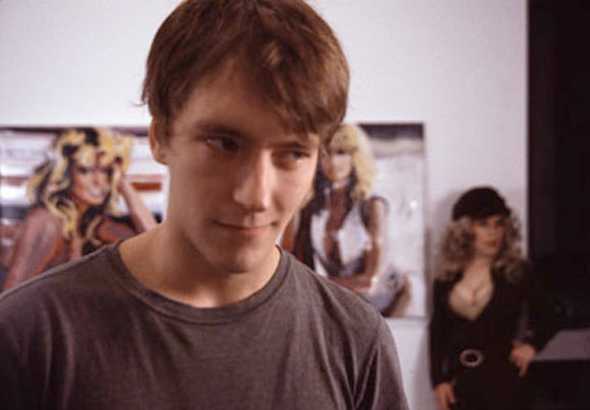
______________
Blood and Guts in High School (Janie 1978-1982) (2004 – 2009)
‘Laura Parnes’ Blood and Guts in High School (2007) is a chillingly dystopic deadpan dramatization of Kathy Acker’s infamously pornographic, plagiarized, resistant, oedipal and anti-imperial novel of the same name (published 1984). Parnes’ version places banal scenes from the life of its nihilistic anti-heroine Janie/Janey Smith in the context of U.S. news events, 1978–1982 (the years of the novel’s composition) including the Jonestown Massacre, the Three Mile Island nuclear accident, the Iranian Hostage Crisis and more. Endlessly timeless, Parnes’ Blood and Guts… presciently dramatizes the banality of everyday institutional oppression in these United States.’
‘Shot with an hallucinat[ory] Kubrickian eye, Blood and Guts… brings a sleek cinematic aesthetic to the often ineptly-lensed genre of gallery video, and offers the form a new role: as Hollywood’s unconscious, peeping into the nightmare from which we cannot awake.’ — Ed Halter, Light Industry
‘Where the thrill of Acker’s gory text and the emotional manipulation of teen-focused films pull out the threads on every heart patch sewn to a young girl’s backpack, Parnes’s videos come off as boring, staged, painfully acted shorts—they are not meant to entertain. They are meant to bludgeon the teenage dream to its untimely death’ — Alicia Eler, Hyperallergic
Excerpt
_______________
The Only Ones Left (2007)
‘The Only Ones Left, a three channel video installation in which a mafia boss who looks like he works on Capitol Hill kills his own men and, at one point, says what George W. Bush said about not letting foreign aid influence tactics in Afghanistan: “At some point, we may be the only ones left. That’s OK with me. We are America.”’ — Catherine Wagley
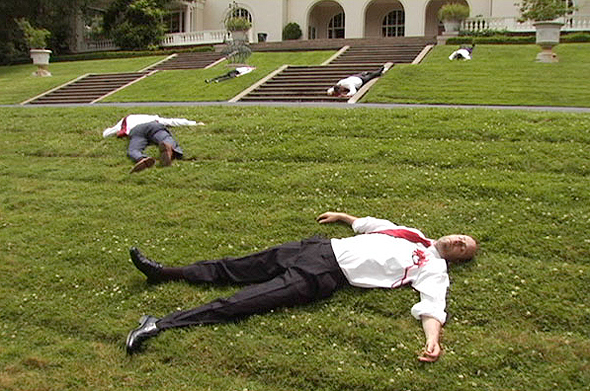
______________
County Down (2013)
‘County Down is a cross-platform, episodic, digital film exploring an epidemic of psychosis among the adults in a gated community that coincides with a teenage girl’s invention of a designer drug. Mirroring rave culture and the unbridled optimism around technology during the 1990s, County Down presents a society so obsessed with novelty and consumerism that it euphorically embraces its own destruction. The multigenerational cast of downtown performers and artists including: Chloe Bass, Becca Blackwell, Ellen Cantor, Patty Chang, Marti Domination, Nicole Eisenman, Jim Fletcher, James Fotopoulos, Andy Haynes, William Powhida, Emily Roysdon, Kate Valk, Stephanie Vella and Sacha Yanow. The soundtrack and musical arrangements are by Johanna Fateman, formerly of Le Tigre, and also include music by JD Samson, Wynne Greenwood, Long Hind Legs, and Lesbians On Ecstasy. Costumes and Styling are by GGrippo.’ — The Kitchen
Trailer
Episode 1: The QuiX’s revolution
Episode 3: Kip’s Mom’s Dance Party Breakdown
Episode 7: Angel’s Compound
Episode 8: The Mirror Game
______________
Tour Without End (2018)
‘Following the fictional band Munchausen through New York’s alternative music scene, Laura Parnes’s satirical doc-fiction hybrid Tour Without End chronicles a milieu pinched by local hyper-gentrification and spun by national politics. Supported by a veritable who’s who of downtown luminaries (Eileen Myles, Gary Indiana, Kathleen Hanna, K8 Hardy, and more) playing versions of themselves, Munchausen (played by the The Wooster Group’s Kate Valk and New York City Players’ Jim Fletcher) serve as our guide to a contemporary DIY world as vibrant as it is precarious (of the 14 venues featured in the film, at least four have been forced to shutter). Elder statesman of New York bohemia, Munchausen thread the needle between several decades of New York art subcultures, mixing with an intergenerational group of artists and taking a long view of a shared culture dominated by the young. Shot between 2014 and early 2018, the film never leaves the political situation far from the frame, with our players entering the eye of the storm on a brief sojourn to Cleveland during the RNC and rallying the community in the post-election spiral, exemplified by a show stopping performance by The Julie Ruin the night after Trump’s election. Between performances by bands like Eartheater, Shannon Funchess, Macy Rodman and Youthquake, Parnes stages semi-scripted scenes creating a portrait of a living artistic community; gossiping backstage, humoring tone-deaf marketing pitches, enduring patronizing interviewers, comforting one another, enjoying each other’s work, and attempting to make sense of our increasingly disturbing historical moment.’ — Nellie Killian, Film Comment
Trailer‘
*
p.s. Hey. ** Niko, Hi! Welcome! First, I’m sorry not to have gotten back to you. I’m super bad at correspondence and checking messages and things but I’ll go find your thing today. I’m very into shorter novels, both reading and writing them. A lot of my all-time favorite novels — Blanchot’s ‘Death Sentence’, Pinget’s ‘Fable’, Duras’s ‘Malady of Death’, just off the top of my head — are quite short. Yes, I do think short novels have a particular kind of power. It’s a power I love getting and trying to finesse myself. I think it’s very important that your novel be exactly the length you think it needs to be. I say don’t let yourself be convinced to pad the novel out just to make it more ‘acceptable’. If there’s resistance, live it out because you will find a publisher and respect for it, even if there are early hurdles, and there may not be hurdles due to its length at all. Yes, at least in the US, there is a bit of a prejudice against short novels among publishers, but it’s not a line in the sand. Two of my earlier novels are shorter even than my new one, and I had no problem getting them published. In France, very short novels are totally respected and common. So, obviously, I encourage you to make your novel precisely what you think it needs to be. I hope that helps? Really nice to see you here. Take care until soon. ** MyNeighbourJohnTurturro, Hi, man. Well, there is that kind of cinema being made, it’s just difficult to access it and even find out about it. It has become a kind of ‘underground’, but there are a number of young filmmakers working in that realm and making very strong work. Yes, our new film is about/set in a ‘home haunt’ that a family is constructing in their home. Great that you can see ‘Crowd’. I just saw it here, as I said, and it seems to be in very good shape. And the Tramway is very cool. ** David Ehrenstein, Hi. Well, I mean, they’re walk-through attractions often made on a household budget with more passion than expertise, so I don’t think films are their competitors. But, yes, about that film, I do agree. ** Steve Erickson, Everyone, Mr. Erickson has weighed in on the newest Lana Del Rey album if you’re into experiencing his take. Here. Yes, one of the things Zac and I will be doing in our So. Cal. Halloween work/fun trip is talking to and interviewing at least a couple of home haunt makers. We’re tentatively set to talk with the teen guys who do the first haunt in yesterday’s stack, ‘Twisted Minds presents …’, for instance. Their work is close to what we’re looking to do. And we’ll see who else we can talk to. Generally home haunt makers are very into talking about their haunts since haunts are not generally taken that seriously. Yeah, if you’re not a name and making experimental features, you have to hope there’s buzz of some kind and you have to hope to catch the attention of those rare film programmers who are in search of truly adventurous works and new, unique filmmaking voices. That’s your only chance. I guess it’s about finding the fine line between being attentive and being addicted. It is entirely possible to keep up but not live a big chunk of your life waiting for and reacting to every little outrage Trump attempts. I seem to have found that fine line at least so far, but it’s as delicate balance for sure. ** _Black_Acrylic, Hi. So. Cal. is for sure the center and main breeding ground and aesthetic lab for the spooky house. Pretty much all of the innovations come from haunt makers there. Yes, I’ve read a few things about Boleskine House here and there. Quite interesting. ** KK, Hi, man. I think Disorder is a good place, and knowing people connected makes a huge difference, obviously and, well, sadly. There are like I said, so many presses publishing poetry out there, and good ones. It depends on the venue you’re looking for. I mean, off the top off my head, there’s Ugly Duckling Presse, Black square, BlazeVOX, Krupskaya, … I could go on and on. And there are quite good online poetry publishers like Gauss PDF and Radioactive Moat and others. But, yeah, see what Disorder says first, I guess? Well, this is my first book with this new agent, so you never know, and agents do reject their authors’ books or ask them to do sometimes extensive rewrites. I mean, when I sent my longtime former agent ‘The Sluts’, he told me I should just put it in a drawer and that no one would publish it, but then it ended being my most successful novel, so it can be tricky. Anyway, I’m relieved that mine likes the novel and wants to submit it as is. ** Brendan, Hi, B. Oh, weird, well, this comment arrived, at least. Sorry as ever to be slow on the correspondence front. I’m so bad at that, but I will. Just to start/preface, I fucking love the new work. Really, really a lot. The photos and painting juxtapo thing is very exciting, and the paintings are incredible. That first one in the stack you sent me, whoa! Great stuff, man! ** Sypha, Hi. Well, yeah, but Trump’s destruction is real world and effecting people everywhere in the world, so it’s extremely way beyond a mere existential thing. But, ugh, I don’t want totally about that prick here. Enough. Well, you should design a haunt. From pix of your house, it could make a fine haunt, and Rhode Island definitely needs a good haunted house. The ones there are not that exciting. ** Right. Today my galerie presents the works of the very excellent Laura Parnes. I hope you’ll investigate the show. I think you’ll be quite happy you did. See you tomorrow.




 Now available in North America
Now available in North America 
“I’m very invested in humor and I’m always ironically applying popular culture aesthetics to comment on a lot of other cultural issues” That’s a roundabout way of saying “I don’t know how to tell jokes.” I find Laura Parnes right on the edge of Really Interesting.
John Waters se “if you go home with somebody and they don’t have any books — don’t fuck them.”
Dennis, A nice Galerie before I leave. Thanks! I like her work.
We leave for the airport in 4 1/2 hours. Getting ready now.
My T-Mobile allows for free international data, so no reason I can’t peek in from time to time. Especially if something funny happens. Kayla will have her laptop too, and the host has free Wifi there.
Getting excited now. 😀
Latest FaBlog: Baby Love (With Fava Beans and a Nice Chianti)
Above link includes a homage to Peter Greenaway.
Hey I’m a fan of Laura Parnes and even found a couple of posts about her on my old defunct blog pages. I saw Heidi 2 at Deitch Projects on my New York trip in 2000 and I remember the show being very wonderful.
Hey Dennis – Don’t know Laura Parnes and the work looks interesting. Excited to explore it more and familiarize myself. The past few weeks I’ve been buried in some unpleasant freelance drama and financial woes, which I hope will be short lived. Catching up on the blog and really enjoyed the haunted house, Greenaway, and Acker posts.
If you didn’t know, the Cinematheque is showing some of the super rare Garrel films over the next 10 days and you should totally go! I would *love* to hear yr thoughts on them. They’re one show only for things like Blue of Origins, Athanor, Voyage in the Gardens of the Dead, La Concentration, etc. I was hoping to come over for them, but then work + money imploded at once and clearly it wasn’t meant to be.
Also, sent you and Zac an email about the PGL piece to make sure the results looks kosher. Don’t be shy in sharing any thoughts etc.
I just got back from seeing JOKER. It’s hard to criticize without making it sound a Dangerous Outrage, but really it’s as bland, tame and secondhand as you can get while trying very hard to be unpleasant. The only interesting idea it has is that comedy, dance and violence are intertwined, but it took that from Kubrick’s A CLOCKWORK ORANGE (among other places) and doesn’t do anything beyond stating that idea. It’s the kind of movie that thinks it’s badass for playing music by Gary Glitter and naming its comedy club “Pogo’s” because 99% of the audience will not get the dark implications of those Easter eggs.
Here’s my essay about FIGHT CLUB for the Quietus: https://thequietus.com/articles/27232-fight-club-anniversary
When are you and Zac heading to California?